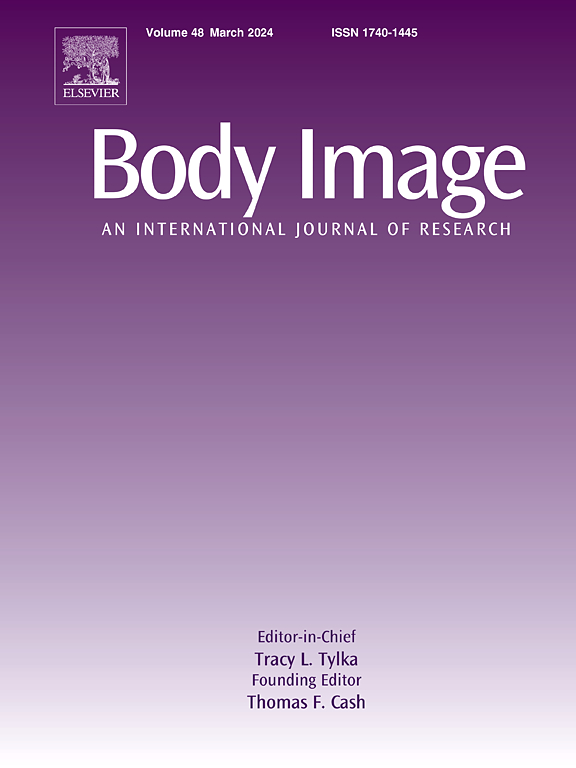“注意你的身材!”看,但不吃”:对社交媒体上吃视频中与吃和外表相关的信息进行的内容分析
IF 5.4
1区 心理学
Q1 PSYCHIATRY
引用次数: 0
摘要
研究表明,YouTube上的某些饮食视频(例如,吃饭)包含不健康的饮食行为,观众可能会关注这些视频中主持人的体型。然而,目前还没有对更大范围的吃视频所传达的信息进行分析,也没有分析不同视频分享平台之间的差异(例如,流行的西方和中国平台之间的文化差异)。因此,目前的研究分析了一系列与饮食有关的视频中与饮食和外表有关的信息(例如,吃帮,饮食挑战;N = 180),并比较了这些信息在三个平台(YouTube、TikTok、Bilibili)上的差异。结果显示,大多数视频中都有年轻的亚裔或白人主持人,他们暴饮暴食,并在主持人和观众之间展示视觉互动和口头或书面交流(通过字幕或评论),这表明社交媒体上的饮食视频很有吸引力。大约一半的视频描绘了瘦弱的身体。三个平台之间存在显著差异(例如,YouTube视频中更多的暴饮暴食),这表明不同的平台包含不同类型的关注信息,不同的人群可能容易受到观看与饮食有关的内容对其饮食行为和身体形象的可能影响。本文章由计算机程序翻译,如有差异,请以英文原文为准。
“Mind your figure! Watch, but don’t eat”: A content analysis of eating and appearance-related messages in eating videos on social media
Research has shown that certain eating videos on YouTube (e.g., mukbang) contain unhealthy eating behaviours and that viewers may focus on hosts’ body type portrayed in these videos. However, there is currently no analysis of the messages conveyed in a wider range of eating videos, nor of the differences among various video-sharing platforms (e.g., cultural differences between popular Western and Chinese platforms). Therefore, the current study analysed eating and appearance-related messages from a range of eating-related videos (e.g., mukbang, eating challenge; N = 180), and compared the differences in these messages across three platforms (YouTube, TikTok, Bilibili). Results showed that most videos included young adult Asian or Caucasian hosts who engaged in overeating and displayed visual interactions and verbal or written exchanges (via captions or comments) between hosts and viewers, demonstrating that social media eating videos are engaging. Approximately half of the videos portrayed thin bodies. There were significant differences across the three platforms (e.g., more overeating featured in YouTube videos), which suggests that different platforms contain various types of messages of concern, and that different groups of people may be vulnerable to the possible impact of watching eating-related content on their eating behaviour and body image across the platforms.
求助全文
通过发布文献求助,成功后即可免费获取论文全文。
去求助
来源期刊

Body Image
Multiple-
CiteScore
8.70
自引率
28.80%
发文量
174
期刊介绍:
Body Image is an international, peer-reviewed journal that publishes high-quality, scientific articles on body image and human physical appearance. Body Image is a multi-faceted concept that refers to persons perceptions and attitudes about their own body, particularly but not exclusively its appearance. The journal invites contributions from a broad range of disciplines-psychological science, other social and behavioral sciences, and medical and health sciences. The journal publishes original research articles, brief research reports, theoretical and review papers, and science-based practitioner reports of interest. Dissertation abstracts are also published online, and the journal gives an annual award for the best doctoral dissertation in this field.
 求助内容:
求助内容: 应助结果提醒方式:
应助结果提醒方式:


